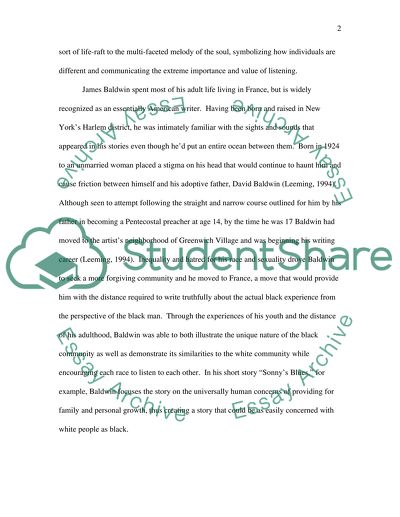Cite this document
(Special Features of James Baldwins Short Story Sonnys Blues Case Study, n.d.)
Special Features of James Baldwins Short Story Sonnys Blues Case Study. Retrieved from https://studentshare.org/literature/1560910-sonny-blue
Special Features of James Baldwins Short Story Sonnys Blues Case Study. Retrieved from https://studentshare.org/literature/1560910-sonny-blue
(Special Features of James Baldwins Short Story Sonnys Blues Case Study)
Special Features of James Baldwins Short Story Sonnys Blues Case Study. https://studentshare.org/literature/1560910-sonny-blue.
Special Features of James Baldwins Short Story Sonnys Blues Case Study. https://studentshare.org/literature/1560910-sonny-blue.
“Special Features of James Baldwins Short Story Sonnys Blues Case Study”. https://studentshare.org/literature/1560910-sonny-blue.


